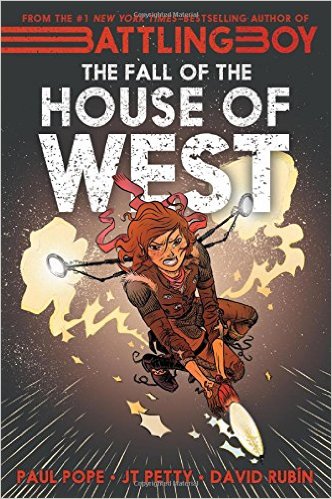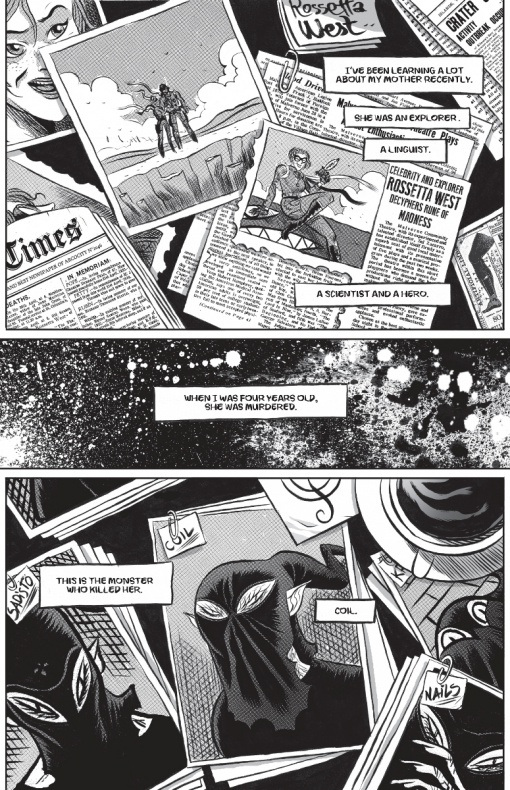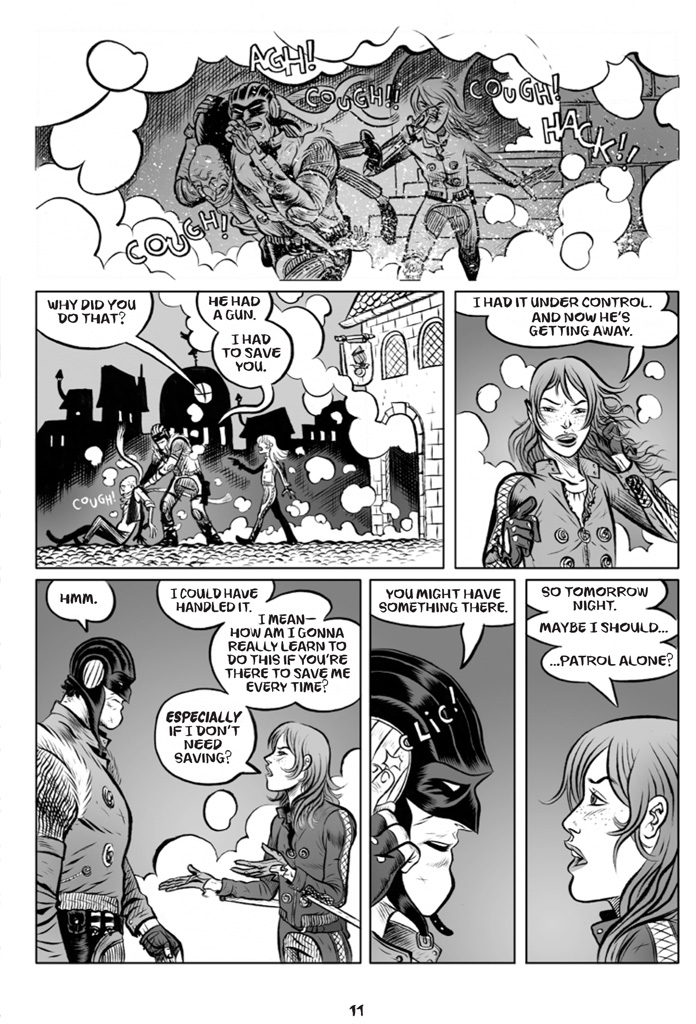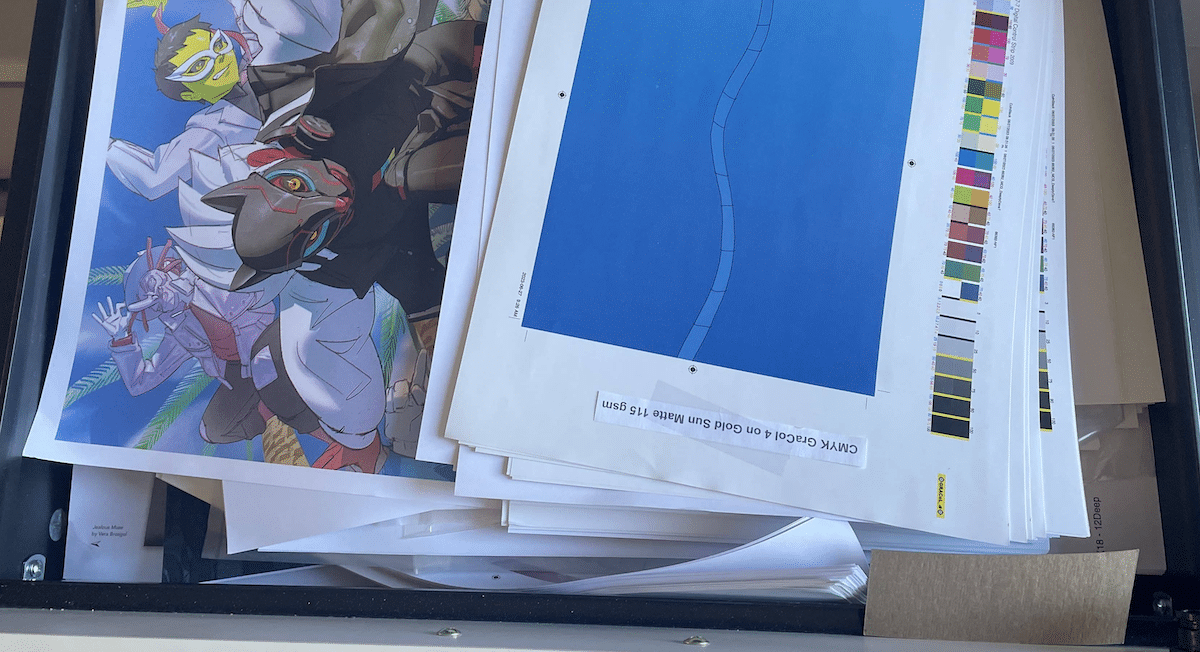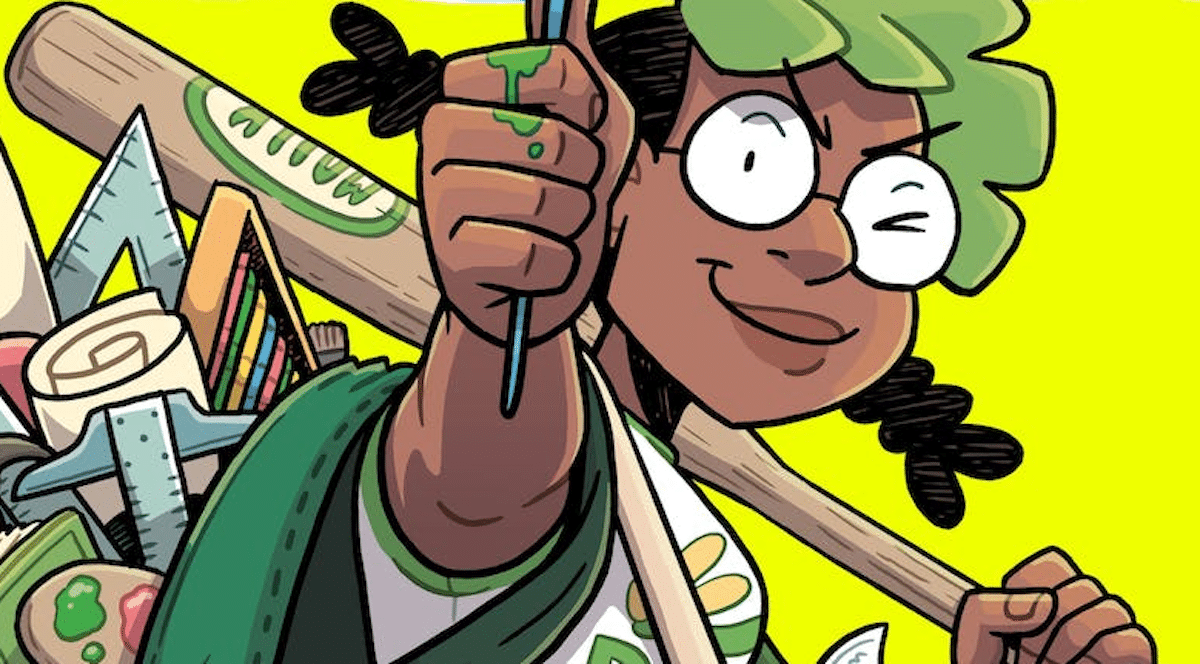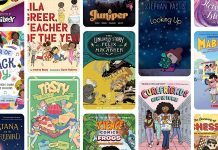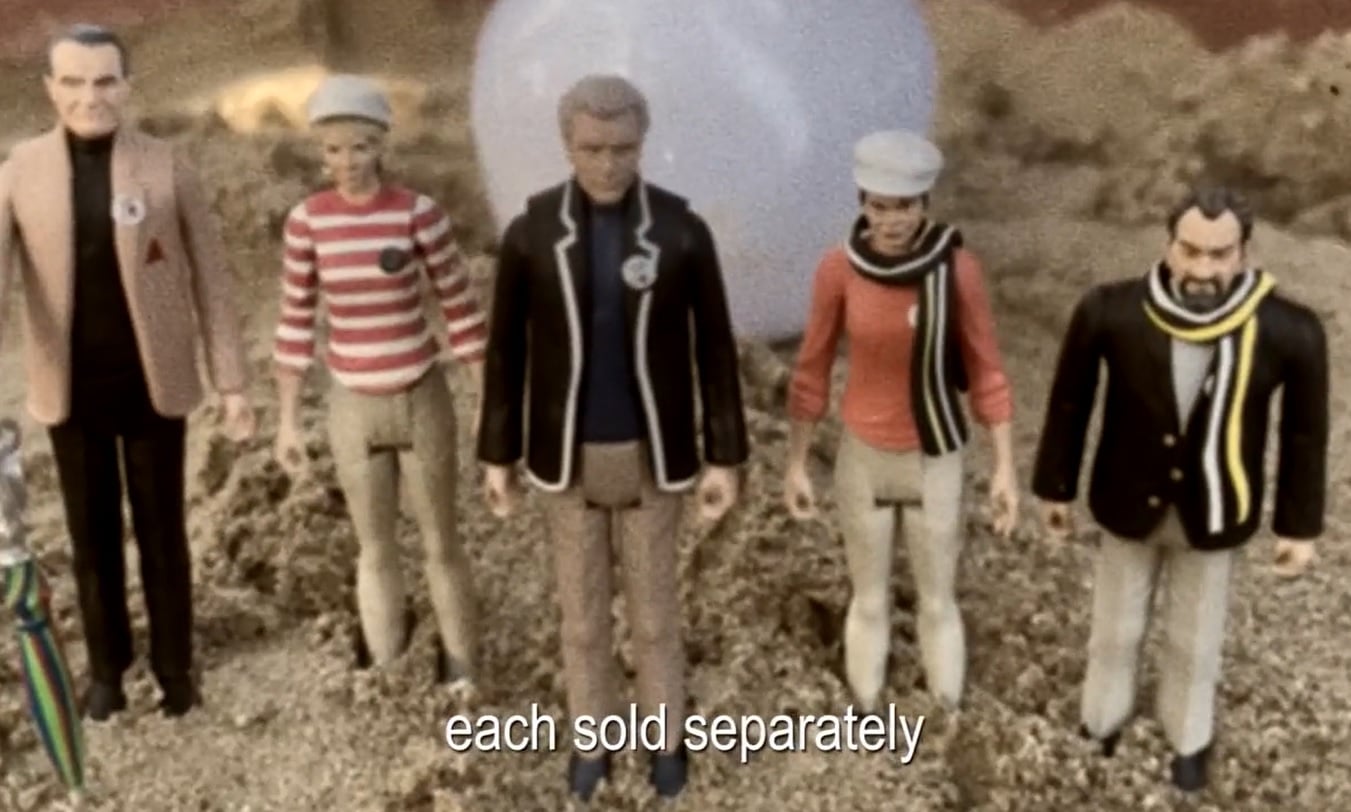The Fall of the House of West is finally here! Sequel to The Rise of Aurora West and prequel to Battling Boy, this volume is written by JT Petty and Paul Pope, with art by David Rubin.
At the outset, The Fall of the House of West prepares readers for a tragic comic. The title, the events leading up to and surrounding this new volume, and what fans know is a terrible eventuality in the series all add up what should be a colossal sequence of unfortunate events. Instead, the title of the book seems to be a misnomer – the heart of this volume dealing with love, loss, and family. It has its devastating moments, of course, but nothing to merit such an alarmist title as the “fall” of the West house. Instead, the characters, namely Aurora, are redeemed throughout the story. Learning from her mistakes, growing as a person, and beginning to let go of the past make for a happier conclusion than the name of the comic suggests.
Initially I had thought the title of the book was an allusion to Edgar Allan Poe’s The Fall of the House of Usher, given there are some convincing similarities between the two. Both stories are gothic in tone, and deal with strong feelings of fear and guilt. There is the idea of the self-fulfilling prophecy in both, and characters that seem to live in a perpetual state of sensory overload. However, as Aurora learns in the book, trying to make such neat and clean connections between two disparate things is not good detective work, and pushing to make the pieces fit together is not a solution. So, maybe there’s nothing to that. But maaaaaybe there is.
The writing in FOTHOW can come off a bit frantic at times – though that is something that can be expected from this storyline. Between the various monsters running loose, children being kidnapped, blasters being fired, and main characters in imminent danger, it’s no wonder the driving forces behind this comic are sometimes lost amidst the chaos of the moment. The story also seems to take place in the short span of a few days, flashbacks aside, which does a lot to add to the frenzied nature of the book.
As far as characters go, Aurora is once again the star of the show. She is the only character that sees any substantial development – though it’s scant for a 158-page book. Her relationship with her father grows into one of deeper understanding and trust, and she continues learning how to be a better hero. The mystery behind the death of her mother is finally revealed to Aurora, and it’s leagues more awful than any lead the family has been chasing thus far. Learning that dark secret quickly shapes Aurora into a mature character – one that can more easily deal with the harsh realities of life – much to the dismay of Croward.
In regards to the art, David Rubin continues to do a masterful job. The monsters remain firmly in the arena of ghastly, with many panels of grotesque beasts without their masks, or horribly swollen after a righteous beating from the West family. The action sequences are kinetic, dynamic, and easy to follow. Bolts from guns leap across the page to their targets, followed by acrobatic evasive maneuvers. Facial expressions are a big part of the success of this book as well, with Rubin by now being well versed in drawing fear, repulsion, guilt, and anger.
Overall, this book is firmly on point with its predecessor, and fits nicely within the larger story at hand. There seems to be more story coming before these books catch up to the events of Battling Boy, so readers will have to wonder a little longer at what’s happening for Aurora and her family, and if her father will ever learn the terrible cause of his wife’s death. Recommended reading for any comics fan.


